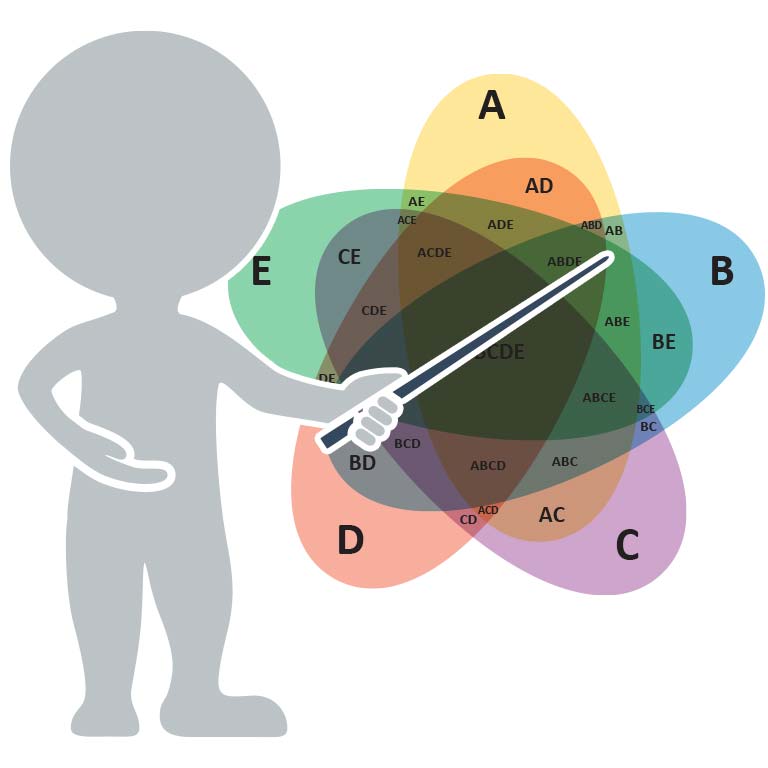On 5/19/2015, the Musicians of the Minnesota Orchestra (MOMA) ratified a 3.5 year collective bargaining agreement (CBA) with their employer, the Minnesota Orchestra Association (MOA). The new agreement begins 2/1/2017 and expires on 8/31/2020; at the beginning of the 2019/20 season, the base musician annual salary with electronic music guarantee (EMG) will by $110,604 and the number of salaried musicians will increase to 94 (although the CBA continues to define the orchestra size as 98).
This is a healthy set of improvements and by the end of the new agreement, brings salaried musicians to within 0.86 percent of their base compensation before the season-killing lockout.
 At the same time, both MOMA and MOA agreed to maintain the existing substitute musician pay disparity for the entire length of the agreement. Following the ratification of the current agreement, substitute musicians earn 90 percent of what salaried musicians earn each service (typically, a rehearsal or concert) and per terms in the subsequent CBA, that rate will become 95 percent at the beginning of the 2017/18 season and remain there until the final day of the agreement, 8/31/2020, when substitute musicians will finally reach parity.
At the same time, both MOMA and MOA agreed to maintain the existing substitute musician pay disparity for the entire length of the agreement. Following the ratification of the current agreement, substitute musicians earn 90 percent of what salaried musicians earn each service (typically, a rehearsal or concert) and per terms in the subsequent CBA, that rate will become 95 percent at the beginning of the 2017/18 season and remain there until the final day of the agreement, 8/31/2020, when substitute musicians will finally reach parity.
For those readers who are just now encountering this issue, it is worth pointing out that the substitute disparity has been a highly charged topic since it was uncovered in January, 2014 immediately following the ratification of the existing CBA.
Since then, both MOMA and MOA have declined repeated requests for information and interviews on this topic and when approached for interviews via this article, they continued to decline multiple requests. Consequently, the only information available is what can be drawn from press statements and traditional news reports.
Perspective
Following the ratification of the current agreement (2014 through 2017), there was a great deal of sentiment that MOMA only agreed to the substitute pay disparity because the MOA’s executive leadership at that time forced the issue and left no alternative even though the musicians managed to achieve their primary goal of remaining in the Top 10 highest base musician salary levels among US orchestras.
Although neither side in the work stoppage confirmed nor denied this was the case, individuals close to MOMA committee members asserted that the musicians genuinely believed had no other choice but to accept those terms; one such individual was Robert Levine, who did agree to a live video discussion on the topic moderated by SoundNotion.TV on 1/20/2015. It is a fascinating discussion and I highly recommend taking the time to watch.
It is worth noting at this juncture that MOMA and their local union representatives, Twin Cities Musicians’ Union (Local 30-73), declined to consider a proposal that would have resolved the disparity by establishing a voluntary Disparity Mitigation Fund. In this arrangement, the salaried musicians, who collectively have a duty to fairly represent the well-being of non-voting substitute musicians belonging to the same union, would have contributed to offset the gap in substitute pay. Instead, they opted to remain mum on the topic and keep the disparity in place while allowing supporters to speculate on and justify their decisions.
Fast forward 18 months and MOMA/MOA reach a new agreement nearly two years ahead of when the current CBA expires. The executive leadership that was purportedly the root for the substitute pay disparity is no longer with the institution and labor relations are downright congenial.
“Reaching an early and amicable agreement with musicians sends an important message to our community that stability and labor harmony are restored at the Orchestra and our organization is facing the future with a shared purpose and agreed-on direction,” said MOA President and CEO Kevin Smith via a 5/19/2015 press statement.
MOMA expressed similar sentiments via a 5/25/2015 settlement bulletin submitted to the International Conference of Symphony and Opera Musicians (ICSOM) (emphasis added).
This negotiation was unlike any the Minnesota Orchestra musicians have previously experienced. MOA President & CEO Kevin Smith, General Manager Beth Kellar-Long and the negotiating team worked collaboratively as the new agreement came together in a matter of weeks. Both sides presented only those items they felt most supported the mutual goals of the organization. With some back and forth and a bit of “off-stage” help from attorneys for language clarification, both parties we able to respond to every proposal with some form of “yes.” There is hope that this experience—one that builds trust, mutual respect and satisfaction, and faith in a unified vision of the future—can be the model for every subsequent negotiation. ~ from the introduction to MOMA’s ICSOM settlement bulletin.
It seems clear that whatever animosity existed when it was believed that MOMA had no choice but to accept the substitute pay disparity has entirely evaporated.
Nonetheless, both employer and employees determined the disparity should continue through 8/31/2020; moreover, based on the musicians’ sentiments in the ICSOM settlement bulletin it appears that restoring substitute pay parity before increasing salaried musician base pay was not a mutual goal of the organization.
Is The Disparity Worth Less Than One Percent Of Annual Total Expenditures?
In order to help understand the dollars-and-cents impact of the decision, we can calculate reasonable ballpark figures to help determine what the institution saves by continuing the substitute pay disparity.
Let’s walk through the formula in plain English to figure out MOA’s total savings:
- (annual salary without EMG) / [(8 service week) * (52 weeks per season] * .9 = Substitute Per Service Rate, or SPSR.
- SPSR * 8 service week * (52 week season – musician vacation weeks) = Maximum Substitute Annual Salary, or MSAS
- (annual salary without EMG) – MSAS = Pay Disparity
- Pay Disparity * Max potential substitutes employed = Total Savings
So if we plug in the values for the 2014/15 season, we get the following:
- $92,824 / (8 * 52) * .9 = $200.82
- $200.82 * 8 * (52 – 6) = $73,901.76
- $92,824.00 – $73,901.76 = $18,921.82
- $18,921.82 * 21 = $397,358.12
When you apply this formula to the remaining seasons through 8/31/2020, MOA ends up saving approximately $1,333,740.82 over all six seasons. Over just the course of the recently ratified agreement, the cumulative savings is $408,895.30 or approximately one percent of a single fiscal year’s total annual expenditures.
In short, the MOA’s total savings is a negligible amount within the total budget.
Let’s Apply These Figures To A Disparity Mitigation Fund: Is The Disparity Worth $2,599.48 Per Year?
When applied to a MOMA Disparity Mitigation Fund, the $397,358.12 Total Savings figure for the 2014/15 season could be entirely offset by each musician contributing $99.24 per week, or $5,160.48 over the course of the season.
Interestingly enough, that figures drops considerably each season through the end of the recently ratified agreement. For instance, we have enough data to conduct some reasonable calculations and when all the math is said and done, here how the cost per musician breaks down per season:
- 2014-2015: $5,160.50/yr or $99.24/wk
- 2015-2016: $3,283.79/yr or $63.15/wk
- 2016-2017: $2,716.83/yr or $52.25/wk
- 2017-2018: $1,804.76/yr or $34.71/wk
- 2018-2019: $1,295.87/yr or $24.92/wk
- 2019-2020: $1,334.90/yr or $25.67/wk
Over that entire stretch of time, the average cost per week for each salaried musician to completely eliminate the disparity drops to only $49.99/week, or $2,599.48/year; having said that, it is worth pointing out that these calculations are on the (very) high side and the actual cost would almost certainly be lower.
 To look it from another perspective, and still using the very high estimates, the $2,599.48/year figure is 2.51 percent of the average base musician compensation (with EMG). At the same time, the average increase in base musician compensation over all six seasons is approximately 2.75 percent.
To look it from another perspective, and still using the very high estimates, the $2,599.48/year figure is 2.51 percent of the average base musician compensation (with EMG). At the same time, the average increase in base musician compensation over all six seasons is approximately 2.75 percent.
In short, the disparity mitigation fund would be paid for entirely with planned improvements to base compensation with some left over to spare.
So in a very real sense, even though it would be musician administered, the MOA is actually picking up the tab to eliminate the disparity while the salaried musicians would still walk away from the deal with an increase in take-home salary every season.
Tomato/Tomahto
In the end, it would have been genuinely fruitful to speak with MOA President and CEO Kevin Smith and MOMA negotiating committee chair Tim Zavadi in order to get their thoughts on whether or not maintaining equal pay for equal work is worth less than one percent of the annual budget. Moreover, it would be fascinating to know why attaining parity was not among the terms rising to the level of being considered among the mutual goals of the organization. Hopefully, one or both individuals will decide to exchange ideas with on these issues in the near future.
But now that the deal is done, it’s highly unlikely to expect the employer to mitigate the disparity directly; consequently, the ball is once again back in the musicians’ collective court as they can elect to implement a Disparity Mitigation Fund at any time.



Hi, Drew — I would like to know, do you have the substitute pay disparity percentages for other major American orchestras? Is it 90% across the board or does it vary by orchestra? If it varies, by how much? I think it would be fascinating to learn what the national situation is and compare that with the situation in Minnesota. It sounds like the Minnesotans are rectifying their disparity, however slowly, and it’d be nice to give them a little credit for that, too!
Thanks!
Cinda
That’s an excellent question; perhaps unsurprisingly, the AFM and its player conferences aren’t anxious to share those figures but disparity rates vary across the board with some as low as 75%. You can find a list of which orchestras maintain parity and those which don’t at an article from Feb, 2014 along with a companion piece from the same month with a US/Canadian comparison.
As for credit, I’m not too sure what you mean here; especially in light of the information available in the new agreement. As it stands, here are a few key points:
1) The abusive former executive leadership has been replaced with one the musicians praise.
2) Each year of the new agreement contains meaningful increases in base compensation for salaried musicians and the ongoing restoration of salaried musician complement.
3) The wage improvements more than cover the costs related to eliminating the disparity from Day 1 of the new agreement.
4) The increases in salaried musician base compensation keep the Minnesota Orchestra musicians within the Top 10 highest paid orchestras in the US.
5) MOMA representatives continue to refuse discussion on the topic.
Consequently, I’m genuinely interested in what anyone may single out in that list as being especially praiseworthy and/or serve as an example within the field of unionized performing arts labor.
brings salaried musicians to within 0.86 percent of their base compensation
Drew, just to clarify: Is that 0.86% or 86%? (If the former, it seems like so close as to make one wonder why they didn’t just go all the way.)
That is correct, it is 0.86% and if MOMA or MOA decides to discuss the issues, we may be able to get an answer to that question.